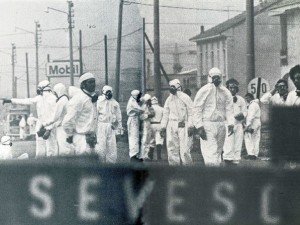Seveso III: Issues and Challenges for Operators

The Seveso III Directive has now come into operation in Ireland (as of 1 June 2015), with significant consequences for the operators of Seveso establishments. The new regulations will restrict operators from increasing the inventory of dangerous substances without prior approval of the Health and Safety Authority (HSA), possibly requiring operators to obtain planning permission if the HSA deems the change in inventory to be a "significant change". They provide greater access by the public to information on establishments and their hazards and may require operators to directly communicate more extensively with the public outside of the site due to the removal of the "specified area" from the legislation.
For upper-tier sites, the timelines specified in the 2015 COMAH Regulations may have significant implications for commencement of construction and operation of new establishments. The following illustrates how, for a new establishment, the safety report process could potentially impact the project timescale by over 12 months:


It is therefore essential that project managers factor Safety Report preparation and HSA approval into overall project timelines. In addition, modifications to existing sites (both upper and lower-tier) that constitute "significant changes" must also be approved by the HSA before they can commence. This may include an increase in inventory due to the installation of a new storage vessel. In some cases, modifications will require planning permission to be obtained for developments that would otherwise be below the planning threshold. The timescales for this process are not specified and again could significantly impact overall project timescales. We eagerly await further clarification on what constitutes a "significant change" and timescales for the HSA and planning authority review process.
Another change for upper-tier sites is that the concept of the "specified area" is no longer included in the Regulations. This previously defined the area within which operators were required to inform members of the public of actions to take in the event of a major accident. It was based on the area within which the individual risk of fatality equated to 1E-07 per year (or 0.1 chances per million per year), derived using quantitative risk assessment. As such, it was influenced by both the severity of the incident and the likelihood that it would occur. Often the specified area remained within the site boundary due to the very low likelihood that conditions such as those necessary to carry toxic releases over long distances (low wind speeds and stable atmospheres) would coincide with an accidental release. The 2015 COMAH Regulations provide for the HSA to identify and notify the operator of the extent of the area within which persons are likely to be affected by a major accident. Whether this will be risk or consequence based remains to be seen. Ultimately, operators may be required to provide information to larger populations than has previously been the case, a process which needs to be carefully managed.
For the first time, operators of lower-tier establishments are required to provide public information about their establishment and its hazards and to submit their Major Accident Prevention Policy to the HSA. Operators of both upper and lower-tier establishments will be required to make information permanently electronically available to the public. The HSA will collect this information in the notification form and keep it up to date. Information on inspections will also be publicly available.
Finally the 2015 COMAH Regulations provide that all information held by a competent authority is treated as environmental information and subject to the Access to Information on the Environment Regulations (2007 to 2014). Although these regulations include discretionary grounds for refusal (including commercial confidentiality and intellectual property rights), a request for environmental information shall not be refused where the request relates to information on emissions into the environment (such as a major accident?). The new regulations may therefore offer little protection to commercially confidential information included in safety reports (such as chemical names). This may yet be tested in the court system.
In conclusion, the 2015 COMAH Regulations introduce a new era with greater interaction between operators, regulators and the public. Project managers will need to consider Seveso implications from day one, putting control of major accidents at the centre of the project planning.
Author:

Maeve McKenna, Principal Risk Consultant
Contact: Maeve.McKenna@AWNConsulting.com
Attached Documents
This article has recently been published by PharmaChemical Ireland in their 2015 Newsletter.